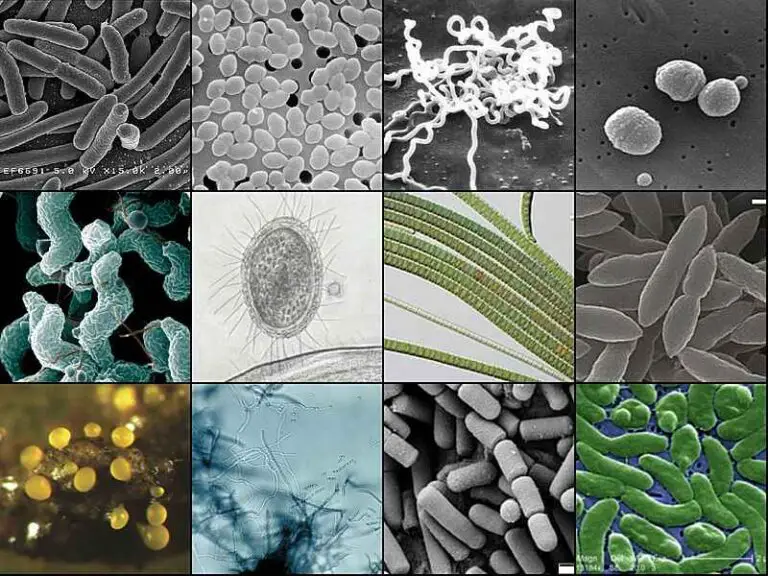BECCS Carbon CAPTURE, and BECCS Carbon REMOVAL
BECCS carbon capture is the extraction of carbon dioxide directly from bioenergy systems, while BECCS carbon removal is the extraction of atmospheric carbon dioxide that is produced entirely or partly by bioenergy systems.
This article discusses BECCS carbon capture and removal, as outlined below;
-BECCS Carbon Capture Definition and Working Principle
-BECCS Carbon Removal Definition and Working Principle
-Difference between BECCS Carbon Capture and BECCS Carbon Removal
BECCS Carbon Capture Definition and Working Principle
BECCS carbon capture is the active extraction of isolation of CO2 from flue gases released from bioenergy systems like biorefineries, bioreactors, and biofuel-fired hybrid vehicles or power plants.
It is usually achieved using technologies that are specialized for the isolation of CO2 through absorption or adsorption mechanisms.
BECCS carbon capture is very scalable, since it can be easily adjusted to meet the estimated volume of CO2 and the overall, combined amount of greenhouse gases released [1].
In addition to being more common, it is arguably a more effective and proactive approach to the decarbonization of bioenergy usage, than BECCS carbon removal, since the approach involves extraction of carbon from its source, rather than remedial removal of already-emitted carbon dioxide.
For BECCS carbon capture to be effective, a pre-analysis or evaluation of the physicochemical conditions of the bioenergy system in question, is usually required.
Such an analysis will provide information on the precise composition of flue has leaving the system, as well as its volume; thereby enabling operators to optimize the facility, technique and process, to meet set goals.
It is however important to acknowledge that BECCS carbon carbon capture is not always carbon-negative or carbon-neutral in real-life scenarios, due to technical limitations in the ability (or performance) of existing technology to capture CO2 in the field, as well as imbalances in the amount of biomass consumed compared to the rate of replenishment.
Generally, BECCS carbon capture works by the integration of carbon capture equipment into the exhaust component or terminal of bioenergy systems.
These equipment could be in the form of scrubbers, or other technologies, and are usually configured in such a manner that allows for direct interaction with flue gas leaving the combustion engine.
Aside its role in mitigating climate change risk [4], BECCS carbon capture technology also mitigates air pollution, especially with regards to carbon-based pollutants like soot, and when the equipment used are powered by clean energy resources.
The approach is effective for boosting the sustainability of renewable fuel, as well as the energy efficiency of biomass and bioenergy systems, even within a complex context such as distributed energy resources management systems (DERMS).
Because of the simultaneous release of waste energy (in form of heat) alongside flue gas in most internal combustion engine facilities, it is not uncommon for BECCS carbon capture to include cogeneration and other energy recovery functionalities [2]. Where such additional functionalities are present, they can help with energy conservation and environmental impact-mitigation.

BECCS Carbon Removal Definition and Working Principle
Technically, BECCS carbon capture leads to the removal of CO2. However, carbon capture and carbon removal, are two different concepts within the context of bioenergy with carbon capture and storage.
BECCS carbon removal is the act and process of extracting carbon dioxide from the atmosphere within the vicinity of bioenergy operations.
In most cases, the carbon dioxide extracted using this approach, is dominantly derived from, and traceable to biomass conversion, bioenergy production, and utilization; hence the relevance of the technology to bioenergy applications.
Unlike BECCS carbon capture that uses exhaust-integrated facilities, BECCS carbon removal is heavily dependent on direct air capture, among similar technologies, for its operation [3].
Also, while BECCS carbon removal is arguably broader in its effect, BECCS carbon capture is more effective for specific decarbonization of bioenergy resources.
Difference between BECCS Carbon Capture and BECCS Carbon Removal
The difference between BECCS carbon capture and BECCS carbon removal, is that BECCS carbon capture deals with CO2 emissions directly from the exhaust of bioenergy systems, while BECVS carbon removal is concerned with CO2 emissions that have already been introduced into the atmosphere.
BECCS is a more practical means of decarbonization than carbon removal, because it works at the source of CO2 emissions, to address them before they can have any effect whatsoever on the ecosystem.
The arrangement used in BECCS carbon capture ensures that its application is restricted to scenarios where bioenergy is being used.
On the other hand, while BECCS carbon removal is also applied within the vicinity and context of BECCS systems and operations, its arrangement implies that it can be used to remove carbon emissions from both bioenergy-utilization and other human activity-related contexts.
This can be simplified to state that BECCS carbon capture is more effect-specific, while BECCS carbon removal is broader in application.
BECCS carbon removal is more similar to natural carbon sequestration that uses the interaction between natural carbon sinks and sources to remove CO2 from the atmosphere.
Carbon capture is also more scalable as it can work with measurable changes in the amount of CO2 involved.
BECCS carbon capture is more common and widely-adopted than BECCS carbon removal.
Lastly, BECCS carbon capture uses technologies like flue gas-scrubbing, while carbon removal uses technologies like direct carbon capture.
The table below summarizes comparison between BECCS carbon capture and carbon removal;
|
Comparison Criteria |
BECCS Carbon Capture |
BECCS Carbon Removal |
|
Principle |
Exhaust gas treatment |
Atmospheric gas treatment |
|
Effect |
Specific |
Non-specific |
|
Relative Adoption Level |
High |
Low |
|
Technology |
Gas-scrubbing |
Direct air capture |
|
Relative Versatility |
Low |
High |
|
Scalability |
High |
Low |
Conclusion
BECCS carbon capture differs from BECCS carbon removal by being limited to the treatment of flue gases leaving the exhaust of bioenergy facilities.
Aside their working principles, other factors which can be used to evaluate the difference between BECCS carbon capture and carbon removal include relative complexity, effect, and level of adoption.
References
1). Almena, A.; Thornley, P.; Chong, K. J.; Röder, M. (2022). “Carbon dioxide removal potential from decentralised bioenergy with carbon capture and storage (BECCS) and the relevance of operational choices.” Biomass and Bioenergy 159(6309):106406. Available at: https://doi.org/10.1016/j.biombioe.2022.106406. (Accessed 10 December 2022).
2). Gustafsson, K.; Sadegh-Vaziri, R.; Grönkvist, S.; Levihn, F.; Sundberg, C. (2021). “BECCS with combined heat and power: assessing the energy penalty.” International Journal of Greenhouse Gas Control 110:103434. Available at: https://doi.org/10.1016/j.ijggc.2021.103434. (Accessed 10 December 2022).
3). Rosa, L.; Sanchez, D. L.; Mazzotti, M. (2021). “Assessment of carbon dioxide removal potential: Via BECCS in a carbon-neutral Europe.” Energy & Environmental Science 14(5). Available at: https://doi.org/10.1039/D1EE00642H. (Accessed 10 December 2022).
4). Tatarewicz, I.; Lewarski, M.; Skwierz, S.; Krupin, V.; Jeszke, R.; Pyrka, M.; Szczepański, K.; Sekula, M. (2021). “The Role of BECCS in Achieving Climate Neutrality in the European Union.” Energies 14(23):7842. Available at: https://doi.org/10.3390/en14237842. (Accessed 10 December 2022).




